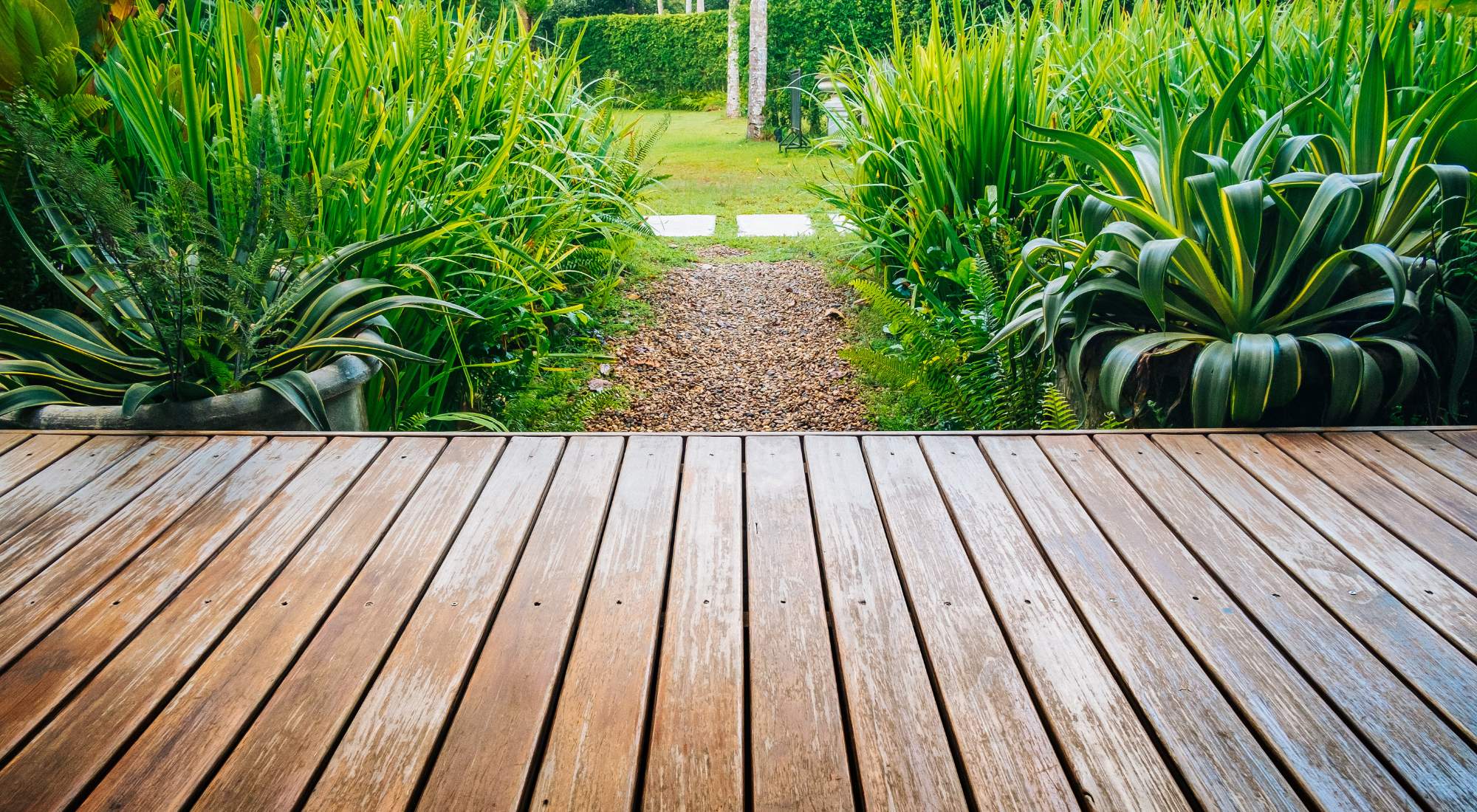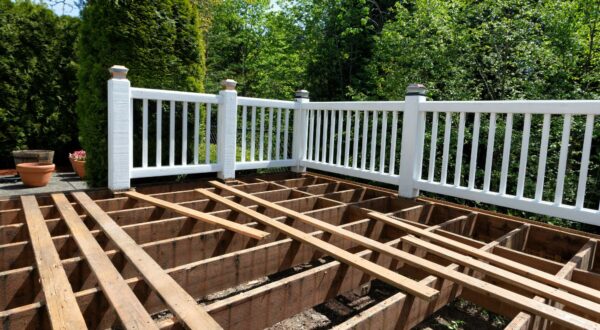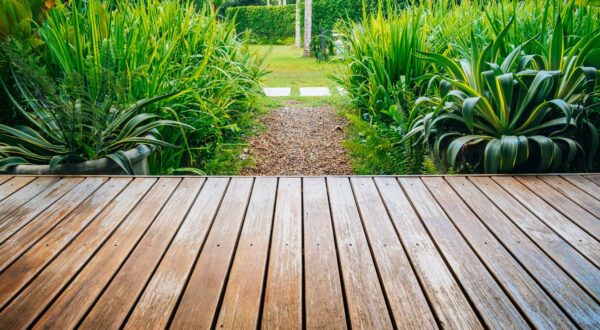How To Fix a Sagging Deck: Tips To Keep Your Outdoor Space Looking Great
November 21st, 2023 | by Jim Gates

You’re not sure how or when it happened but you’re now the sad owner of a saggy deck.
It might be that just one section is sagging, or maybe the entire deck is looking warped.
Whichever situation you find yourself in, one thing’s for certain — it’s time to get your outdoor living space back to its original glory.
In this article, you’ll discover the factors that could be causing the issue in the first place and four possible solutions for how to fix a sagging deck.

Table of Contents
- Is There a Difference Between a Sinking and a Sagging Deck?
- What Are Some Issues That May Cause Sagging in a Deck?
- 4 Possible Solutions for How To Fix a Sagging Deck
- Three Rivers Custom Decks Can Build a Sturdy, Reliable, and Beautiful Deck for Your Portland Area Home
Is There a Difference Between a Sinking and a Sagging Deck?
Yes. There is a difference, however, the problems of sinking and sagging are often related.
If the frame or footings are built on soil that isn’t compacted, the weight of the deck can cause it to sink down into the ground and become less stable.
A sagging deck may be related to issues such as:
- Expanding or contracting lumber
- Rotting wood; or
- Improper weatherproofing
What Are Some Issues That May Cause Sagging in a Deck?
Sagging decks may be caused by a variety of issues ranging from:
- Unstable deck footings
- Poor choice of lumber; or
- A sagging frame
If it was built properly and the problems aren’t too bad it’s usually a fairly simple process to fix a sagging deck. For those that are in especially poor shape, however, it may be necessary to call a reputable company like Three Rivers Custom Decks to replace the deck in its entirety.
At Three River Custom Decks, we specialize in making even the most complicated deck projects look easy. Whether you opt for a waterproof deck or a hardscape surface, our talented design team will create an outdoor space you’ll be proud to call home.
The Deck Footings Not Being Stable
The most common reason for a sagging deck is related to footings settling down into the dirt. They may be just beginning to sink or have already settled. If this is the case, the deck can be outfitted with temporary support and the supporting posts replaced to bring it back to level.
The Type of Lumber Used
If the deck is sagging due to issues with the lumber, it can get a little more complicated. In this scenario, you may have to replace an entire beam or several joists.
The sagging may be caused by the boards or materials that make up the deck’s framing. Sometimes the builder may have used soft wood like hemlock. We find this to be a common problem in the Portland area. The issue is that hemlock (or another softer type of wood) can expand and contract. If a joist shrinks more than the one next to it, you’ll be left with little waves that look like sagging.
At Three Rivers Custom Decks we use a laser to ensure that the top of the surface the deck will be going on is completely flat. We also frame with Douglas fir, which is a dense, stable lumber so you won’t have to worry about dealing with shrinking and swelling.
A Sagging Frame
If you put off maintaining your deck for too long you may discover that the boards have begun to warp and sag. This can occur when your deck is not properly weatherproofed. You’ll need to act promptly if your decking planks begin to warp and flex for any reason.
If you notice sagging in the frame of your deck you’ll want to take action as soon as possible by following these steps:
- Stay off the deck.
- Never test the integrity of a deck whose frame appears to be compromised by yourself.
- Call a professional to look at the deck. They’ll be able to determine whether it can be repaired or if you’d be better off opting for replacement.

4 Possible Solutions for How To Fix a Sagging Deck
Fixing a sagging deck the right way can be complicated, and it’s important for decks to be safe and up-to-code. For this reason, we don’t recommend doing a DIY deck fix. However, here are a few ideas of solutions a professional might implement to fix the problem.
If you decide your deck is damaged beyond repair, consider contacting Three Rivers Custom Decks for a FREE quote for the installation of a new deck.
#1: Check and Repair Loosened Ledgers
A ledger deck support is created from a long, horizontal pressure-treated board that’s directly connected to your home. It is then attached to each floor joist by a metal hanger. Generally, when a deck collapses it is either due to a ledger that was incorrectly attached to the house or that has been compromised by corrosion.
To keep water from seeping behind the ledger and causing damage, a continuous metal flashing should be installed that runs down the entire length of the ledger. It’s also critical for the flashing to continue to run behind the siding so that it overlaps the upper edge of the ledger. If this is missing from your home, it can be easily added.
You’ll also need to confirm the ledger is not simply fastened to the plywood sheathing. Rather, it should be securely attached to all sides of the house with lag screws or carriage bolts spaced in 16 to 24-inch increments. A badly damaged ledger should be replaced.
#2: Align Any Cracked Piers
The majority of raised decks are built on vertical wood pillars or piers that extend down into concrete-filled holes or rest on concrete piers.
Double-check the condition of the concrete to be sure it’s free of cracks and crumbling. It is also wise to measure the diameter of each pier to ensure it is three times the post’s width.
The most common supports for an on-grade deck built near the ground include poured concrete piers, concrete blocks, or bricks. You can easily determine the condition of the piers by using a flashlight to look underneath the deck. If any of the supports have broken, shifted, or sunk into the dirt, you’ll need to jack up the deck to make any needed repairs.
#3: Fix Sagging Joists
The beams and ledger board provide support for the floor joists and are typically spaced sixteen inches apart. Metal joist hangers are used to hold the ends in place.
Joists that have suffered water, insect damage, or breakage should be replaced. As you’re checking the integrity of joists, pay particular attention to splitting or rotting joist ends and joists that are excessively bowed or have begun to sag.
If you’re wondering how to fix a sagging deck joist, follow these steps:
- Remove the blocking from the joist.
- Remove the hardware from the joist hangers.
- Straighten the board by snapping a line and using a circular saw and a straightedge to cut the board.
- Smooth the board with a power planer or jointer.
#4: Cross-Braced Joists
A critical thing to keep in mind when jacking up a sagging deck is that you generally can’t apply jacks under two or three joists and expect it to be enough to lift the entire deck. Instead, you’ll need to install cross braces (two-by-fours work well) on the bottom of the joists spanning the length of the deck. Space the jacks at the same interval as the other supports.

Three Rivers Custom Decks Can Build a Sturdy, Reliable, and Beautiful Deck for Your Portland Area Home
Three Rivers Customs Decks is the Portland deck specialist.
Our team is committed to customer satisfaction — our #1 goal is creating a custom deck that you love and perfectly suits your purposes.
Whether you choose a beautiful natural wood, PVC, or composite option, we use only the highest-quality deck materials. Our services include:
- Outdoor living spaces
- Stairs; and
- Railings
Three Rivers Customs Deck’s crews are trained to work with you as the project unfolds to ensure the final result exceeds your expectations.
Discover the difference for yourself. Contact us today for your free, no-obligation quote.
